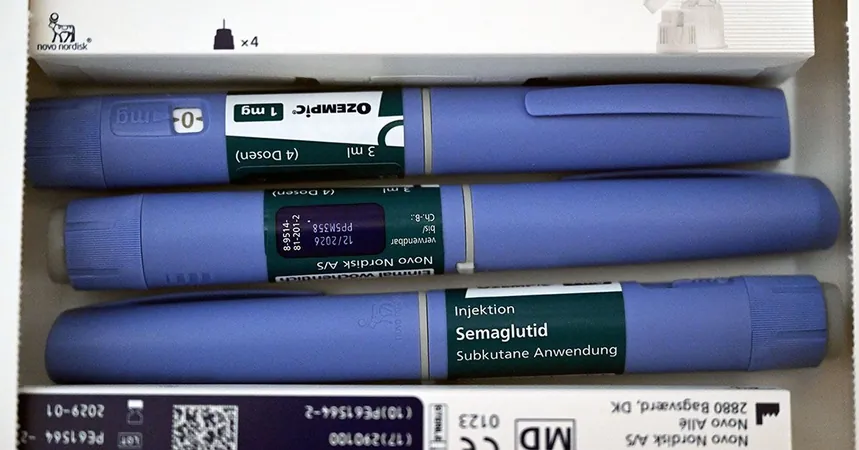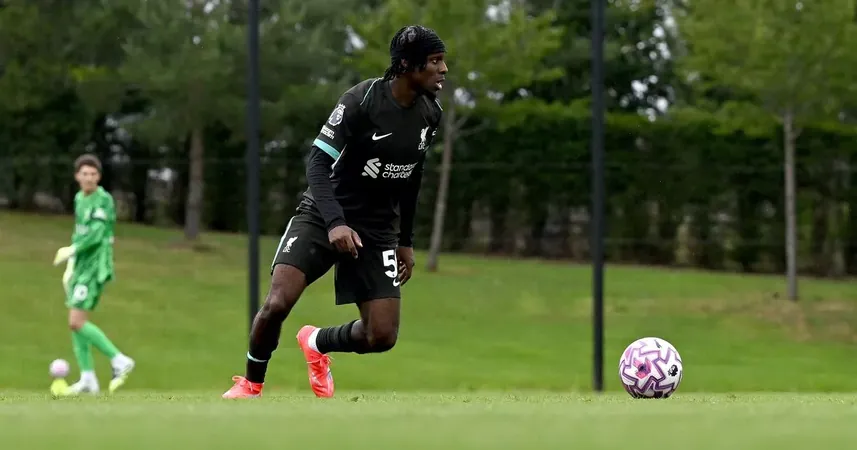
Unveiling the Destructive Secrets of Bubble Bursts: How Contaminated Bubbles Spread Pollution and Disease
2025-07-19
Author: Yu
The Hidden Dangers of Bubble Bursts
We all delight in the simple pleasure of watching bubbles burst— but behind this childhood wonder lies a critical mechanism that contributes to the spread of pollution, microplastics, and even infectious diseases. Researchers at the University of Illinois Urbana-Champaign have turned their attention to this phenomenon, revealing how contaminants impact the dynamics of bubble bursting.
A Groundbreaking Study on Bubble Dynamics
Led by Professor Jie Feng, the research team has had an eye-opening breakthrough. They explored how aerosol droplets are formed when bubbles, laden with impurities, burst. Published in the prestigious journal *Physical Review Letters*, their study proposes a model that identifies how these contaminants influence droplets' size. This work is a game-changer, offering fresh insights into a largely unexplored area.
Bubbles: More than Just Fun!
"Bubbles are everywhere—in our natural environments and industrial processes," explains Feng. As they ascend, these bubbles collect harmful agents like microplastics, bacteria, and viruses from their surroundings. When they burst, they release these hazardous materials into the air, creating a risk for public health and environmental safety.
The Science Behind the Burst
Typically, when we think of bubbles bursting, we envision clean, pure surfaces. However, this study focuses on what happens when bubbles are tainted. The researchers utilized a specialized coaxial system to form these contaminated bubbles and observed the intricate details of jet formation using high-speed cameras.
Revolutionary Findings in Droplet Size
The research revealed that the properties of the contaminant, such as its viscosity and surface tension, play a pivotal role in determining droplet size upon bursting. To measure this, the team introduced a new theoretical parameter, dubbed the revised Ohnesorge number, which enhances our understanding of bubble dynamics in mixed environments.
Implications for the Future
Feng emphasizes the importance of these findings for managing airborne pathogens, particularly in polluted or contaminated aquatic environments. "Understanding how bubbles burst in the presence of contaminants is key to addressing environmental and public health challenges," he stated. The next step for this pioneering research will involve studying groups of bubbles bursting simultaneously, which more accurately reflects real-life situations.
A Bright Future for Research and Public Health
As they continue their groundbreaking work, the research team aims to develop practical tools and insights that can significantly improve our approaches to managing pollution and infectious diseases. This study marks a significant leap toward a more profound understanding of the interactions between bubbles and contaminants—potentially leading to better public health outcomes.




 Brasil (PT)
Brasil (PT)
 Canada (EN)
Canada (EN)
 Chile (ES)
Chile (ES)
 Česko (CS)
Česko (CS)
 대한민국 (KO)
대한민국 (KO)
 España (ES)
España (ES)
 France (FR)
France (FR)
 Hong Kong (EN)
Hong Kong (EN)
 Italia (IT)
Italia (IT)
 日本 (JA)
日本 (JA)
 Magyarország (HU)
Magyarország (HU)
 Norge (NO)
Norge (NO)
 Polska (PL)
Polska (PL)
 Schweiz (DE)
Schweiz (DE)
 Singapore (EN)
Singapore (EN)
 Sverige (SV)
Sverige (SV)
 Suomi (FI)
Suomi (FI)
 Türkiye (TR)
Türkiye (TR)
 الإمارات العربية المتحدة (AR)
الإمارات العربية المتحدة (AR)